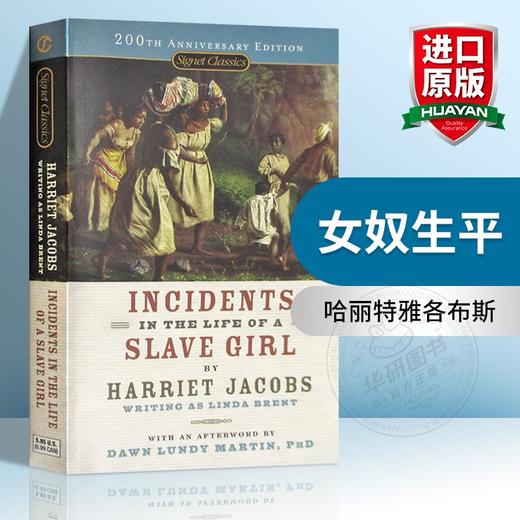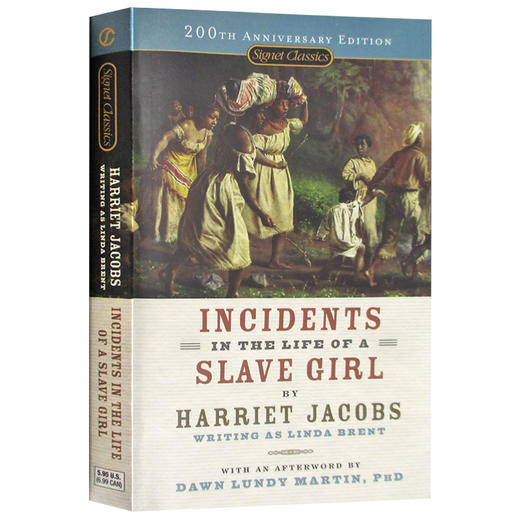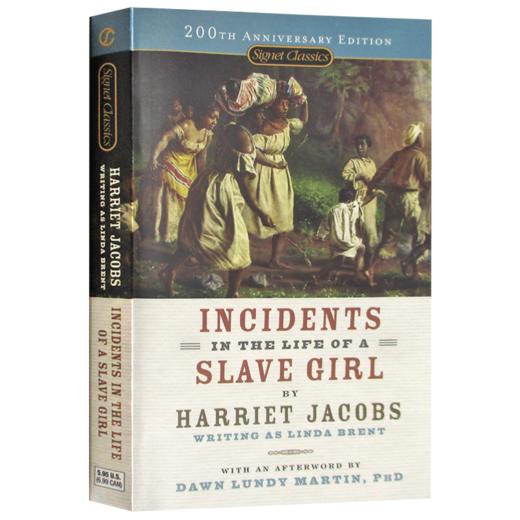女奴生平 英文原版小说书 Incidents in the Life of a Slave Girl Harriet Jacobs 英文版 哈丽特雅各布斯 进口英语书籍·经典文学 自传和回忆录
| 运费: | ¥ 0.00-999.00 |
| 库存: | 12 件 |
商品详情
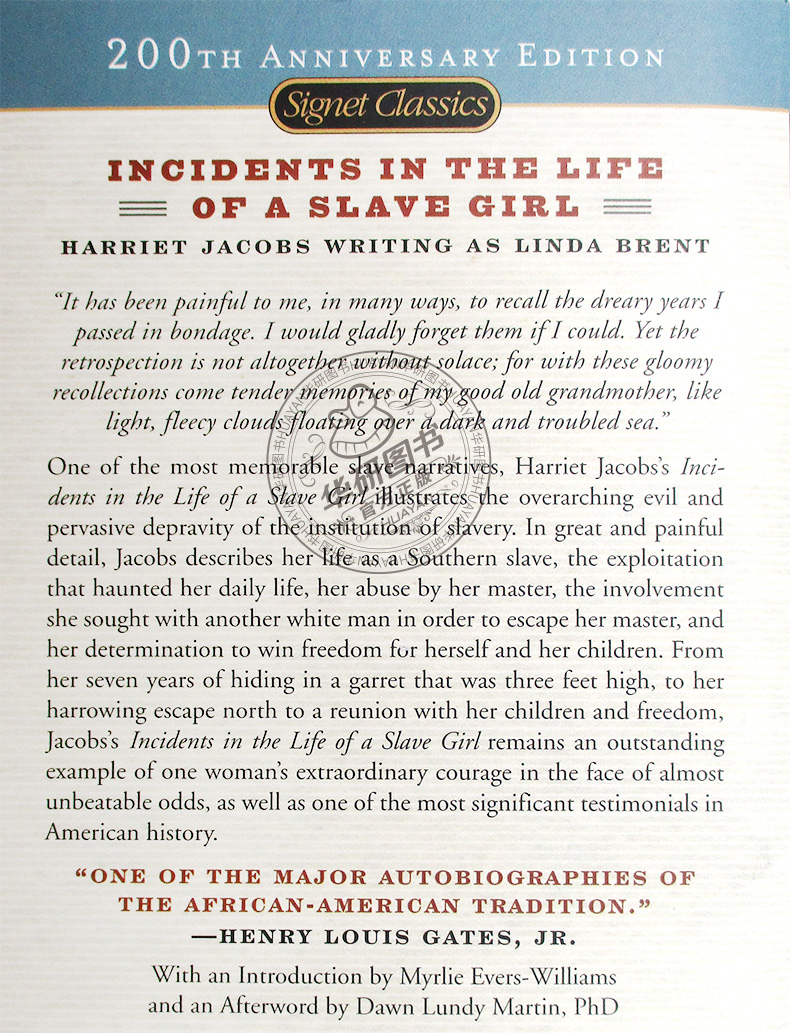
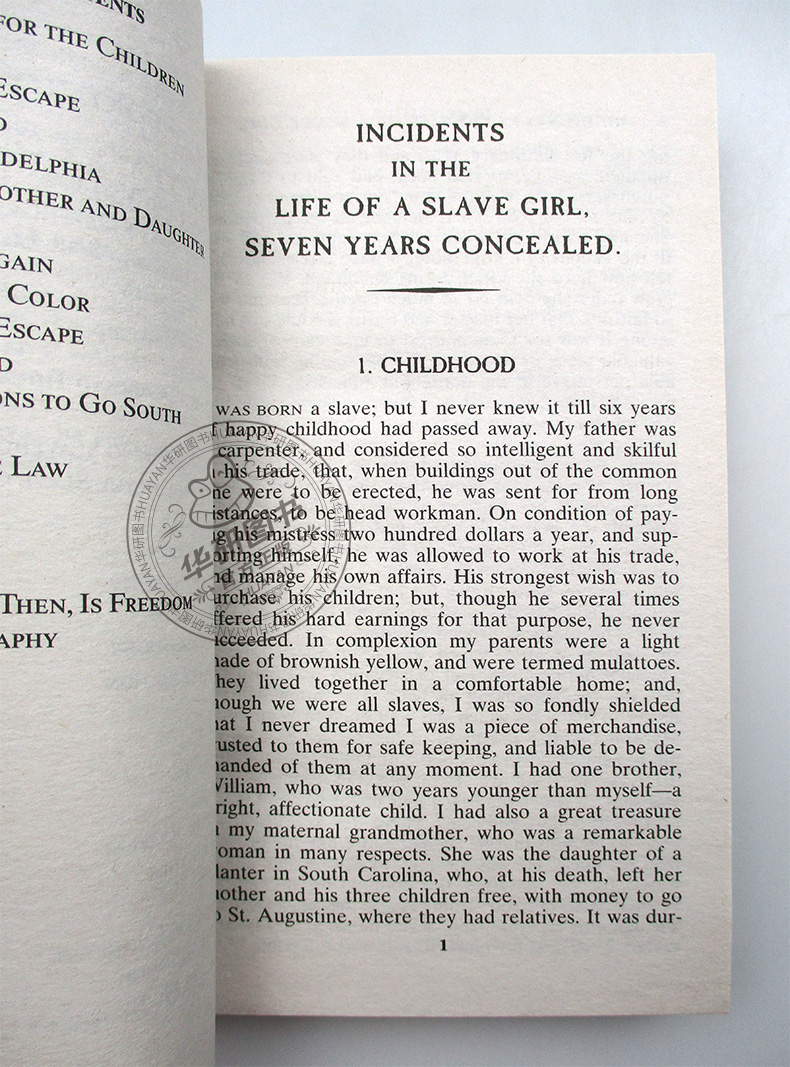
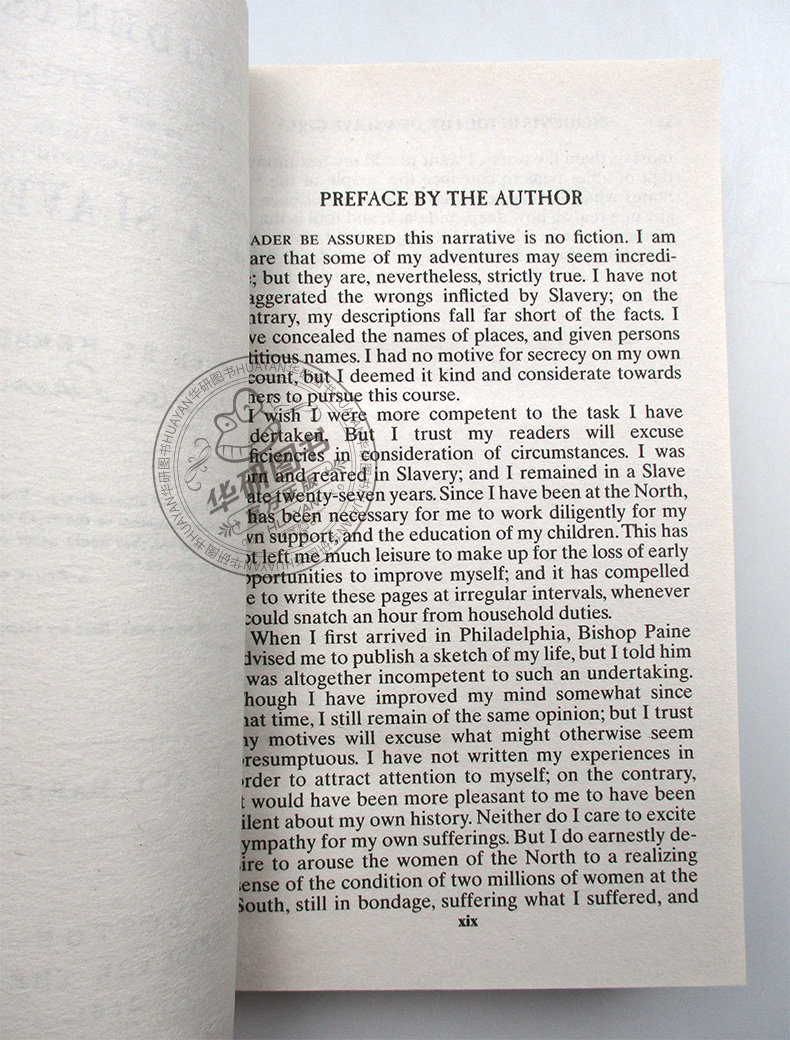
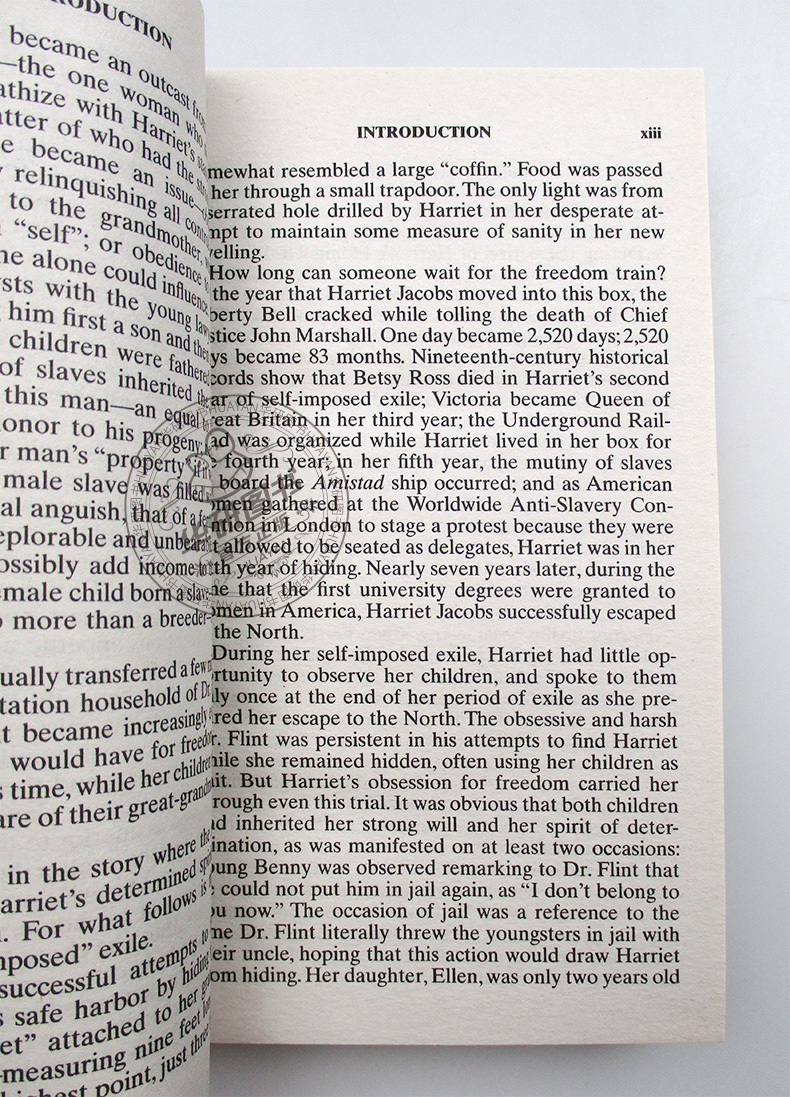
 书名:Incidents in the Life of a Slave Girl
书名:Incidents in the Life of a Slave Girl
作者:Harriet Jacobs
出版社名称:Signet
出版时间:2010
语种:英文
ISBN:9780451531469
商品尺寸:10.7 x 1.9 x 17.1 cm
包装:简装
页数:272 (以实物为准) 哈丽特·雅各布斯是美国黑人女作家,她以其特殊的生活经历写了Incidents in the Life of a Slave Girl《女奴生平》一书,其被认为是黑人文学传统中女性小说和当代黑人女奴自传的创作先驱。《女奴生平》一书真实记述了雅各布斯身为黑人女奴所经历的痛苦生活。然而,雅各布斯凭借自身的努力以及白人朋友的帮助,开始走上探寻自己文化身份的艰难历程,并成长为一个为黑人自由而抗争的女性,为黑人争取权利和自由而不懈努力。
哈丽特·雅各布斯是美国黑人女作家,她以其特殊的生活经历写了Incidents in the Life of a Slave Girl《女奴生平》一书,其被认为是黑人文学传统中女性小说和当代黑人女奴自传的创作先驱。《女奴生平》一书真实记述了雅各布斯身为黑人女奴所经历的痛苦生活。然而,雅各布斯凭借自身的努力以及白人朋友的帮助,开始走上探寻自己文化身份的艰难历程,并成长为一个为黑人自由而抗争的女性,为黑人争取权利和自由而不懈努力。
200th Anniversary Edition
Incidents in the Life of a Slave Girl
Harriet Jacobs Writing as Linda Brent
“It has been painful to me, in many ways, to recall the dreary years I passed in bondage. I would gladly forget them if I could. Yet the retrospection is not altogether without solace; for with these gloomy recollections come tender memories of my good old grandmother, like light fleecy clouds floating over a dark and troubled sea.”
One of the most memorable slave narratives, Harriet Jacobs's Incidents in the Life of a Slave Girl illustrates the overarching evil and pervasive depravity of the institution of slavery. In great and painful detail, Jacobs describes her life as a Southern slave, the exploitation that haunted her daily life, her abuse by her master, the involvement she sought with another white man in order to escape her master, and her determination to win freedom for herself and her children. From her seven years of hiding in a garret that was three feet high, to her harrowing escape north to a reunion with her children and freedom, Jacobs's Incidents in the Life of a Slave Girl remains an outstanding example of one woman's extraordinary courage in the face of almost unbeatable odds, as well as one of the most significant testimonials in American history.
Review
“One of the major autobiographies of the African-American tradition.” — Henry Louis Gates, Jr.
 Harriet Jacobs (1813–97) was a reformer, Civil War and Reconstruction relief worker, and antislavery activist. Born a slave to mulatto parents in North Carolina, she was only fifteen when her master, Dr. Flint, began his pursuit of her. This abuse and the resulting oppression from Flint’s wife forced Jacobs to take drastic measures to protect herself, so she encouraged a relationship with Mr. Sands, an unmarried white lawyer for whom she bore two children. When the situation with Flint became intolerable, she left her children and took refuge in a small garret of her grandmother’s house, where she lived for seven years. She finally escaped to the North, and her children eventually followed. She managed to support herself while evading numerous attempts by Flint to return her to slavery. At age forty, Jacobs was purchased and then emancipated by an abolitionist who was Jacobs’s employer and friend. During the Civil War, Jacobs began a career working among black refugees. In 1863, she and her daughter moved to Alexandria, where they supplied emergency relief, organized primary medical care, and established the Jacobs Free School—black led and black taught—for the refugees. After the war, they sailed to England and successfully raised money for a home for Savannah’s black orphans and aged. Then they moved to Washington, DC, where they continued to work among the destitute freed people, and her daughter worked in the newly established “colored schools” and, later, at Howard University. In 1896, Harriet Jacobs was present at the organizing meetings of the National Association of Colored Women.
Harriet Jacobs (1813–97) was a reformer, Civil War and Reconstruction relief worker, and antislavery activist. Born a slave to mulatto parents in North Carolina, she was only fifteen when her master, Dr. Flint, began his pursuit of her. This abuse and the resulting oppression from Flint’s wife forced Jacobs to take drastic measures to protect herself, so she encouraged a relationship with Mr. Sands, an unmarried white lawyer for whom she bore two children. When the situation with Flint became intolerable, she left her children and took refuge in a small garret of her grandmother’s house, where she lived for seven years. She finally escaped to the North, and her children eventually followed. She managed to support herself while evading numerous attempts by Flint to return her to slavery. At age forty, Jacobs was purchased and then emancipated by an abolitionist who was Jacobs’s employer and friend. During the Civil War, Jacobs began a career working among black refugees. In 1863, she and her daughter moved to Alexandria, where they supplied emergency relief, organized primary medical care, and established the Jacobs Free School—black led and black taught—for the refugees. After the war, they sailed to England and successfully raised money for a home for Savannah’s black orphans and aged. Then they moved to Washington, DC, where they continued to work among the destitute freed people, and her daughter worked in the newly established “colored schools” and, later, at Howard University. In 1896, Harriet Jacobs was present at the organizing meetings of the National Association of Colored Women.
 IN ANY STUDY of the history of America, one is certain to be introduced to the subject of slavery—and varying accounts of the horrifying tales associated with it. The reader of Incidents in the Life of a Slave Girl is taken on a personal odyssey through this most horrific and uncivilized period American history from the viewpoint of a female slave.What makes Incidents exceptional to any other slave narrative is that, with the hesitant and apologetic voice of an enslaved black American woman, the story expressly deals with racism, as well as sexism. Both acts are manipulated through the mechanics of “legal slavery.” The resulting consequences from this demoralized institution have continued to divide the black and white races in America, even to this day.
IN ANY STUDY of the history of America, one is certain to be introduced to the subject of slavery—and varying accounts of the horrifying tales associated with it. The reader of Incidents in the Life of a Slave Girl is taken on a personal odyssey through this most horrific and uncivilized period American history from the viewpoint of a female slave.What makes Incidents exceptional to any other slave narrative is that, with the hesitant and apologetic voice of an enslaved black American woman, the story expressly deals with racism, as well as sexism. Both acts are manipulated through the mechanics of “legal slavery.” The resulting consequences from this demoralized institution have continued to divide the black and white races in America, even to this day.
All “incidents” related in the story of Harriet Jacobs’s life seem to touch on three recurring themes: the struggle for freedom, the preservation of family, and the plight of black American women. It is interesting to note that the author refers to herself as a “slave girl,” although the book was written when she was a forty-year-old woman. And, as if to distance herself from the emotional ties to the story she is about to tell, Harriet chooses to become a spectator in her own life, casting the persona “Linda Brent” in the starring role.
The issues of freedom versus slavery, white versus black, and men versus women are interwoven within the fabric of American society during the 1800s—the period in which Harriet lived. These issues become the target of her struggle for self-identity, self-preservation, and freedom. She sought release from a cruel, sadistic white plantation owner; she longed for the same dignities afforded other American citizens; and she dreamed of life as a woman who could love and be loved by the man of her choice, as well as being a mother who could raise her children in a secure and caring environment.
The uniqueness of this narrative is that Harriet Jacobs, by her own account, was never brutalized physically in the manner that is commonly portrayed in stories about life as a slave. This in itself could have hindered her from seeking freedom at such a high cost—loss of her life, or loss of her children’s lives. She did experience some “blows,” which were mild when considering the standards of the life-threatening beatings received by slaves under similar circumstances. However, the mental abuse and the hypocrisy of the slave-master relationship ultimately became the driving force behind Harriet’s desire to escape. (Before the Nat Turner rebellion in 1831, there was the mistaken image that slaves were a happy lot, and had no desire to leave their masters.)
The statement that introduces Chapter One of the book sets the tone for the remaining sections and is indicative of the naïveté of young Harriet Jacobs as regards to her station in life. She muses that she did not know she “was a slave until I was six years old.” The life of Harriet Jacobs as narrated in the person of “Linda Brent” at that point had been as idyllic as any other child’s, regardless of race or social standing.
- 报佳音
- 主内书籍文创礼品
- 扫描二维码,访问我们的微信店铺
